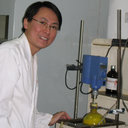Comparative studies of paeoniflorin and albiflorin from Paeonia lactiflora on anti-inflammatory activities.
Paraules clau
Resum
BACKGROUND
Paeonia lactiflora Pall. (Ranunculaceae) has been used for more than 1000 years in traditional Chinese medicine for the treatment of gynecological problems, cramp, pain, giddiness, and congestion. Paeoniflorin, monoterpene glycosides isolated from P. lactiflora, possesses a variety of pharmacological activities. However, the pharmacological activity of the pharmacological activity of albiflorin, another main monoterpene glycoside, has not been well studied.
OBJECTIVE
The present study investigated the anti-inflammatory activities of paeoniflorin and albiflorin using models of lipopolysaccharides (LPS) induced RAW 264.7 cells.
METHODS
Production of nitric oxide (NO) was measured by the Griess colorimetric method. In addition, prostaglandin E2 (PGE2), interleukin 6 (IL-6) and tumor necrosis factor alpha (TNF-α) synthesis were analyzed using an enzyme-linked immunosorbent assay (ELISA). The protein expression of cyclooxygenase-2 (COX-2) was detected by a cell-based ELISA. The gene expression levels of inducible nitric oxide synthase (iNOS), COX-2, TNF-α, and IL-6 were detected by quantitative real-time reverse-transcription polymerase chain reaction (real-time RT-PCR).
RESULTS
Compared with the LPS-induced group, the inhibition rates of NO, PGE2, TNF-α, and IL-6 production were 17.61, 27.56, 20.57, and 29.01% by paeoniflorin and 17.35, 12.94, 15.29, and 10.78% by albiflorin. The IC50 values of paeoniflorin and albiflorin on NO production were 2.2 × 10(-4 )mol/L and 1.3 × 10(-2 )mol/L, respectively. The protein expression of COX-2 was reduced by 50.98% with paeoniflorin and 17.21% with albiflorin. The inhibition rates of gene expression of iNOS, COX-2, IL-6, and TNF-α were 35.65, 38.08, 19.72, and 45.19% by paeoniflorin and 58.36, 47.64, 50.70, and 12.43% by albiflorin, respectively.
CONCLUSIONS
These results show that albiflorin has similar anti-inflammatory effects to paeoniflorin, which provides new evidence that albiflorin can serve as a new chemical marker for the quality control of Paeoniae Radix and the Chinese Pharmacopoeia can be updated.



